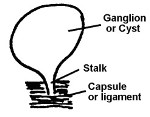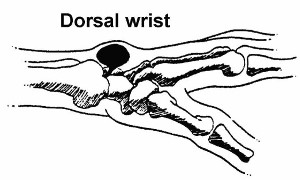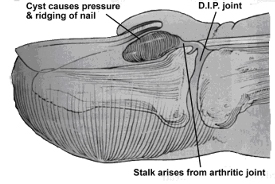Ganglion
Ganglions = Cysts are very common swellings (lumps) that sometimes grow in the hand and wrist.
These cysts are not malignant (cancerous).
It is a sack of fluid arising from the wrist capsule or wrist ligaments.
Occasionally it will appear after minor trauma to the hand.
Ganglions in the hand occur in 4 characteristic sites:
1. Dorsal wrist - the back of the wrist,
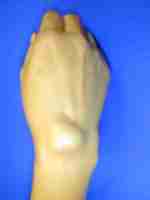
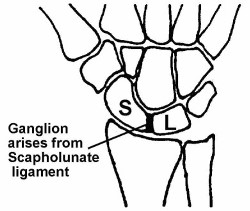
2. Volar wrist - palm / thumb side of the wrist
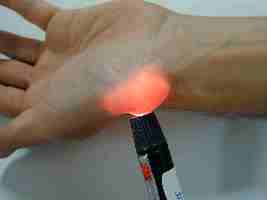
3. Mucous cyst - the end joint of a finger associated with arthritis & may cause finger nail deformity or ridging
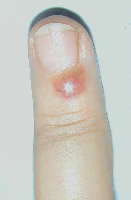
4. Flexor sheath ganglion -base of a finger arising from the sheath around the tendons.
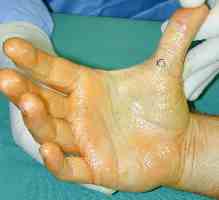
Ganglion cysts usually arise from adjacent joint linings or tendon sheaths.
Although there is usually no specific cause for ganglions, there may have been an injury before the appearance of a cyst. These cysts can be painful, especially when they first appear and with constant or strenuous use of the hand. Ganglions may fluctuate in size and may disappear spontaneously.
DIAGNOSIS
The diagnosis of a ganglion cyst is usually based on where the cyst is and what it looks like.
Dr Myers may recommend x-rays to rule out problems in nearby joints or extension of the ganglion into the bone.
An ultrasound may confirm the diagnosis when a ganglion is very small. Often no tests are required.
TREATMENT
1. Observation - some ganglions resolve spontaneously
2. Hit it with a Bible! (not recommended)
3. Injection with cortisone & bursting or draining the ganglion. Not very effective for wrist ganglions but is of use particularly for flexor sheath ganglions
4. Wrist brace (OAPL) - obtained from my secretary
5. Surgery
- Indicated if the cyst is painful, limits activity, or its appearance is unacceptable & other treatments have failed
- Aim to remove not only the cyst but also the stalk & a small flap of the capsule or ligament from which the ganglion is arising
- Is generally performed in hospital as a day only procedure.
Surgery for Wrist Ganglions
1. Dorsal wrist
- after the operation the wrist is in a splint for a few days & then the wrist can be exercised
- often bending the wrist forward is limited for a few months following the surgery but usually returns with time
- the major problem with this surgery is that approximately 10% of ganglions recur following resection
2. Volar Wrist:
- issues are similar to dorsal ganglions but in addition:
- the Radial artery often runs over the ganglion & must be carefully preserved
- A small nerve branch to the base of thumb region is very close to the scar & can be irritated with this surgery - scar massage after the operation may be required
3. Mucous cysts:
- the DIP or end joint of a finger is commonly affected by osteoarthritis. The ganglion or cyst forms secondary to the arthritis
- may cause finger nail deformity or ridging due to pressure on the nail bed
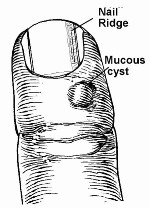
- excision of mucous cysts requires not only excision of the cyst & stalk but also the entire back capsule of the DIP joint & any loose pieces of bone or spurs on the back of the joint
- Recurrence rate also ~ 10%
LAST UPDATED ON 28 / 2 / 15

